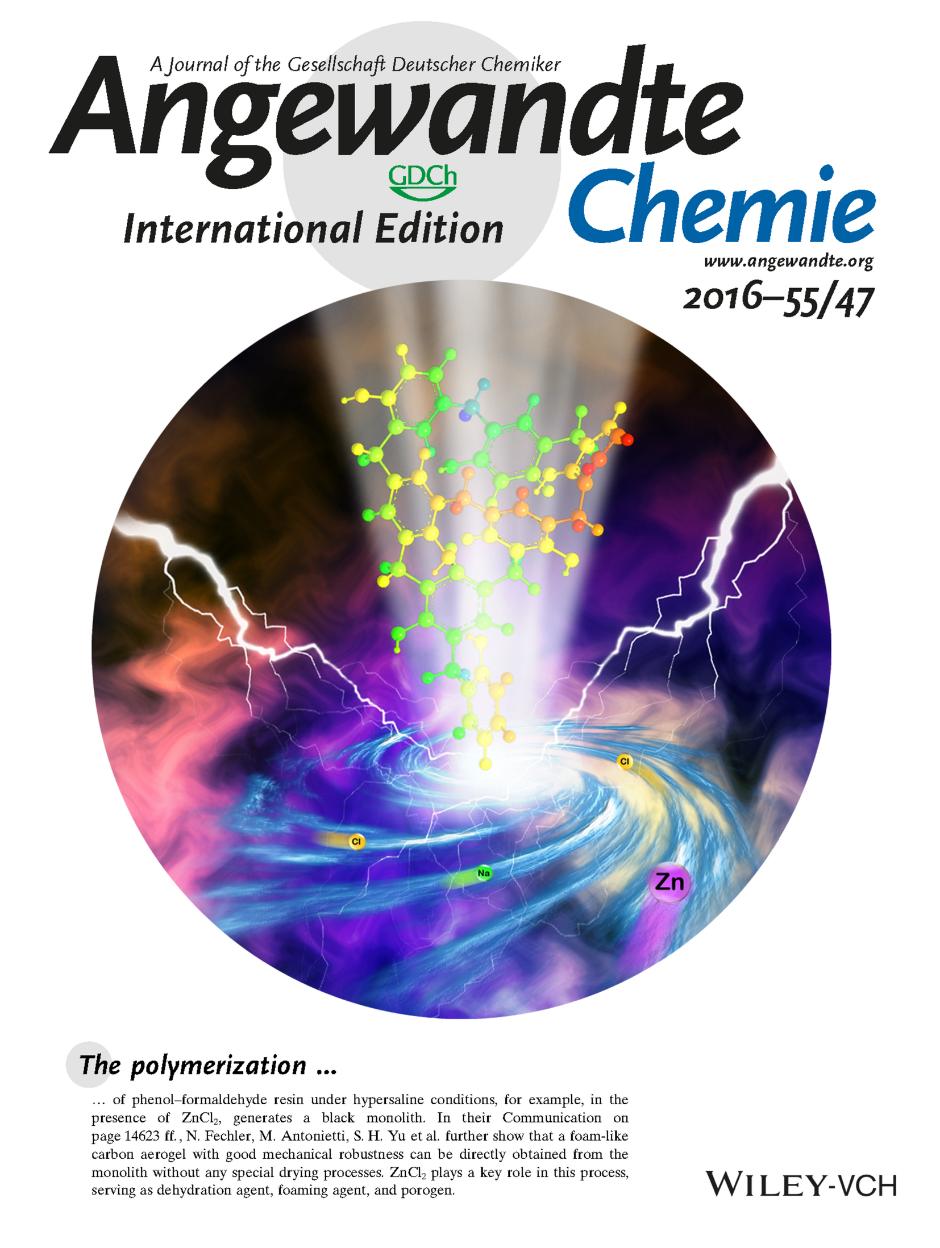The international team with scientists from the USA, Germany and China, put forward a new concept of preparation of phenolic polymer (PF)-based carbon aerogels (CAs) by three-dimensional (3D) templating methods and develop two new methods for the preparation, with two joint works published sequentially recently. The 3D templates including the chitosan networks as 3D soft template and salts as 3D hard template have been established as the general methods for the resin-based CAs.
Porous PFCAs have attracted great interest in the energy and environment fields due to the low cost, high porosity, high surface areas, and excellent chemical, mechanical and thermal stability. However, the conventional methods to the PFCAs suffers some drawbacks such as complicated synthesis and long preparation cycle. In order to further promote the applications of the low-cost PFCAs, a new synthesis method is necessary and urgent.
Prof. YU Shu-Honghave been committed to the large-scale synthesis of CAs. Based on the previous research on the phenolic resin gels, they have taken a giant step forward in the synthesis of PFCAs, formation mechanism of the microstructures and the applications in energy storage. In the chitosan solution, the monomers phenol and formaldehyde was adsorbed near the positive charged chitosan networks. As the polymerization proceeding, the generated PF deposited on the chitosan, generating the porous net-like gels. This strategy provides a new perspective and understandings to the synthesis of activated hard CAs and the formation mechanism of microstructures.
The as-obtained CA exhibits outstanding performances as anode materials in Li and Na batteries. In Li battery, the CA shows very high gravimetric specific capacity (2391 mAh·g−1), high volumetric capacity density (1659 mA·hcm−3) and excellent cycling stability (1180 mA·hg−1 / 819 mA·h cm−3 after 200 cycles). An extended cycling test at 1 A g−1 has shown high capacity (822 mA·hg−1 / 570 mA·hcm−3) and good stability (401mA·hg−1 / 278 mA·hcm−3 after 1000 cycles). In Na battery, it also shows high capacity (745 mA·hg−1 / 517 mA·hcm−3) and good cycling stability (155 mA·hg−1 / 108 mA·hcm−3 after 100 cycles). The work has been published in J. Am. Chem. Soc. 2016, 138, 14915–14922.
The researchers also explored the preparation of CAs under hypersaline conditions. The most leading methods to the carbon aerogels are carbonizing the corresponding delicate organic aerogels with the predesigned microstructures. However, this strategy suffers a fatal disadvantage; that is the special drying process, such as freeze-drying and supercritical CO2 drying, which is necessary for organic gels to avoid the collapse of the micropores. The special drying process inevitably increases the cost of the final carbon aerogels, which restricts the practical and large-scale applications. The key to success in practical applications strongly depends on inexpensive and convenient large-scale preparation. It is urgent and necessary to develop a direct robust route to make carbon aerogels which can further reduce the production cycles and cost.
The above methods provide novel concept for the facial large-scale preparation of phenolic polymer-based carbon aerogels and also provide inspiration for synthesis of other carbon aerogels.

Figure. The cover picture of the research work of the direct synthesis of carbon aerogels under hypersaline condition. (Image by WILEY)
The journals J. Am. Chem. Soc. and Angew. Chem. Int. Ed. sequentially reported the two joint research works of Prof. YU Shu-Hong from USTC with Prof. John B. Goodenough from The University of Texas at Austin and Prof. Markus Antonietti from the Max-Planck-Institute of Colloids and Interfaces, titled in “Ion-catalyzed Synthesis of Microporous Hard Carbon Embedded with Expanded Nanographite for Enhanced Lithium/Sodium Storage” and “Polymerization under Hypersaline Conditions: A Robust Route to Phenolic Polymer-Derived Carbon Aerogels”, respectively. The first author is the PhD student Zhi-Long Yu from USTC.
The above works are supported by National Natural Science Foundation of China, the Foundation for Innovative Research Groups of the National Natural Science Foundation of China, the National Basic Research Program of China, the Users with Excellence and Scientific Research Grant of Hefei Science Center of CAS, Key Research Program of Frontier Sciences and the Chinese Academy of Sciences.
(Hefei National Laboratory for Physical Sciences at the Microscale, School of Chemistry and Materials Science, Collaborative Innovation Center of Suzhou Nano Science and Technology, News Center)
Links:
http://pubs.acs.org/doi/abs/10.1021/jacs.6b06673
http://onlinelibrary.wiley.com/doi/10.1002/anie.201605510/full
Contact
Prof. YU Shu-Hong
Division of Nanomaterials & Chemistry
Hefei National Laboratory for Physical Sciences at the Microscale
Collaborative Innovation Center of Suzhou Nano Science and Technology, Department of Chemistry
CAS Center for Excellence in Nanoscience
Hefei Science Center of CAS
University of Science and Technology of China
Hefei 230026 (China)
E-mail: shyu@ustc.edu.cn
Dr.N.Fechler, Prof. Dr.M.Antonietti
Department of Colloid Chemistry
Max-Planck-Institute of Colloids and Interfaces
Am Mfhlenberg 1, 14424 Potsdam-Golm (Germany)
E-mail: Nina.Fechler@mpikg.mpg.de
markus.antonietti@mpikg.mpg.de